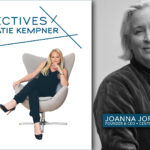Ben Jeffries, CEO and Co-founder of Influencer.com
Content creators have commanded high levels of attention and built strong communities of digital followers. Social media users and creators alike have grown in this environment, and the last two years have demonstrated the inherent strength of these platforms in connecting and engaging audiences. Marketers have been taking notice of this impact on contemporary culture, with 57% of marketing professionals acknowledging its effectiveness and 46% of them planning to increase their investments in 2022.
Yet, due to the fast-paced growth of influencer marketing and growing maturity of the industry, important questions have sprung up concerning regulations. There is a pressing need to ensure transparency, safety, and fairness for content creators, audiences and brands alike on these platforms, but what challenges must the industry overcome to implement this regulatory infrastructure?
The 411 on influencer marketing guidelines
First on the agenda is informing audiences when creator content is part of a marketing campaign. In the UK, the Advertising Standards Authority (ASA) states all creators should label content, e.g. with #ad, to disclose paid-for posts, stories, or videos. But this approach relies on self-regulation, as the sheer quantity of content means it can’t be closely monitored by government bodies.
Instagram alone is predicted to reach almost 1.2 billion users in 2023 and further studies suggest users should post 3-7 times per week to effectively engage their followers. As a result, the platform houses a phenomenal amount of content and enforcing regulations around ad disclosure is tricky. To address the situation, the ASA has begun calling out bad actors with exclusion lists of those who frequently breach guidelines. Brands can then identify them and choose to avoid collaborations to minimise risk.
Further measures can be taken, such as issuing fines which could be a step toward ensuring that the industry follows guidelines. However, this move would raise questions about who should carry the burden of proof and responsibility to pay for these fines. What is certain is that as an increasingly global industry, there must be greater consistency around regulations and the language used across countries — especially when clarifying commercial arrangements.
The complexity of the brand-creator relationship
It should be said that managed or experienced creators have the knowledge and support to uphold regulations. Content and brand partnerships are their bread and butter, and they understand it’s in their best interests to maintain transparency. Newer content creators, meanwhile, may find guidelines overwhelming and be unsure what to disclose. Overcoming this requires education around the different forms of commercial relationships, which can include:
- Brand partnerships: when a brand pays talent to create promotional content.
- Gifted relationships: when brands freely share products with creators in good faith they will be reviewed and promoted.
- Affiliate models: when creators earn a commission for driving brand conversions through their content.
A more nebulous area of these arrangements is how much content creators are compensated. It’s difficult to build a creator rate card because the cost of content is set by individual creators. Some have different specialisms, others are better at driving engagement, consideration, or conversions based on their audience interactions. Everything from creators’ suitability, talent, and online exposure to the marketing outcomes they deliver must be accounted for when negotiating pricings.
What this means is that both brands and content creators must be agile and flexible when it comes to managing their relationships. While brands want creators to generate content that will justify their advertising investment, creators want fair compensation for their work using the different compensation models that exist today.
Subverting the ‘superficial’ stereotype and promoting diversity
Authenticity is key to influencer marketing, as audiences expect creators to share content around something they genuinely care about. Labelling promotional content can sometimes be thought to hamper authenticity, feeding the stereotype that creators are disingenuous, frivolous, or unimportant. This misconception overlooks the fact that the vast majority of creators will only agree to work with brands they truly believe in, while also ignoring the significant amount of work creators do to manage content across different platforms, alongside guaranteeing their followers engage with brand partnerships.
Creators are clearly in a strong position to share uplifting, relatable content, relevant advice, and address long-standing issues. For example, nearly two-thirds (65%) of online users in the U.S. and UK appreciated creators’ light-hearted entertainment following the outbreak of Covid-19. The push for greater representation, for instance, has also grown due to movements such as Black Lives Matter. Brands are proactively responding by implementing diversity initiatives such as setting guidelines to ensure that the creators they work with are representative of the consumers they serve. In turn, creators are helping brands to build two-way conversations with audiences. At a time when business is the most trusted and only institution seen as both ethical and competent, in comparison to NGOs, media and government, companies will need to embrace their expanded mandate and expectations. Fortunately, they can turn to influencer marketing to engage in highly important public discussions such as diversity. But building a dialogue can cause another issue that needs regulation — that of online harassment.
The rise of the internet troll
The ‘superficial’ misconception of the industry can lead to certain users trolling, degrading, or being hateful to creators. While harassment is an unfortunate facet of social media, the internet is a creator’s workplace and they need better protection on social media.
One regulatory challenge is that trolling is often private, occurring in direct messages. Some talent managers and creators themselves make efforts to safeguard against this, tasking assistants to monitor audience interactions. Specialist support is also available through mental health charities or talent agencies, but there’s no denying the traumatic experience hateful behaviour can cause. Social media platforms are furthering their own measures, with TikTok updating its settings so that accounts of users under 16 are private only. This is a good start, but more can be done to protect content creators and minimise their exposure to harmful interactions.
Although regulations for influencer marketing are still being defined, the industry would welcome more robust guidelines and is taking steps toward implementing this for the benefit of brands, audiences, and content creators. This is critical for the sector’s ongoing success and for ensuring that brand-creator relationships are transparent, creators are protected, and the industry is inclusive and ethical.






